Earlier this month the Art Gallery of Ontario revealed its major retrospective collection of Jean Michel Basquiat’s work, Now is the Time. The city has hummed with anticipation to see what the AGO has made of this enormous undertaking, and it has resulted in some interesting and mixed opinions.
 Installation view. Photo: Elena Iourtaeva
Installation view. Photo: Elena Iourtaeva
To clarify, there is no doubt that Toronto has welcomed this Basquiat exhibition with open arms, as it is clear that the city has been craving a daring show which pushes buttons and pulls people into thought-provoking conversations. The question, however, is: has the AGO been able to appropriately curate Basquiat’s work in a way which buttresses his passion for social justice and issues facing Black Americans, or have they simply made a passable attempt at grazing over the inequity and power structures which he references?
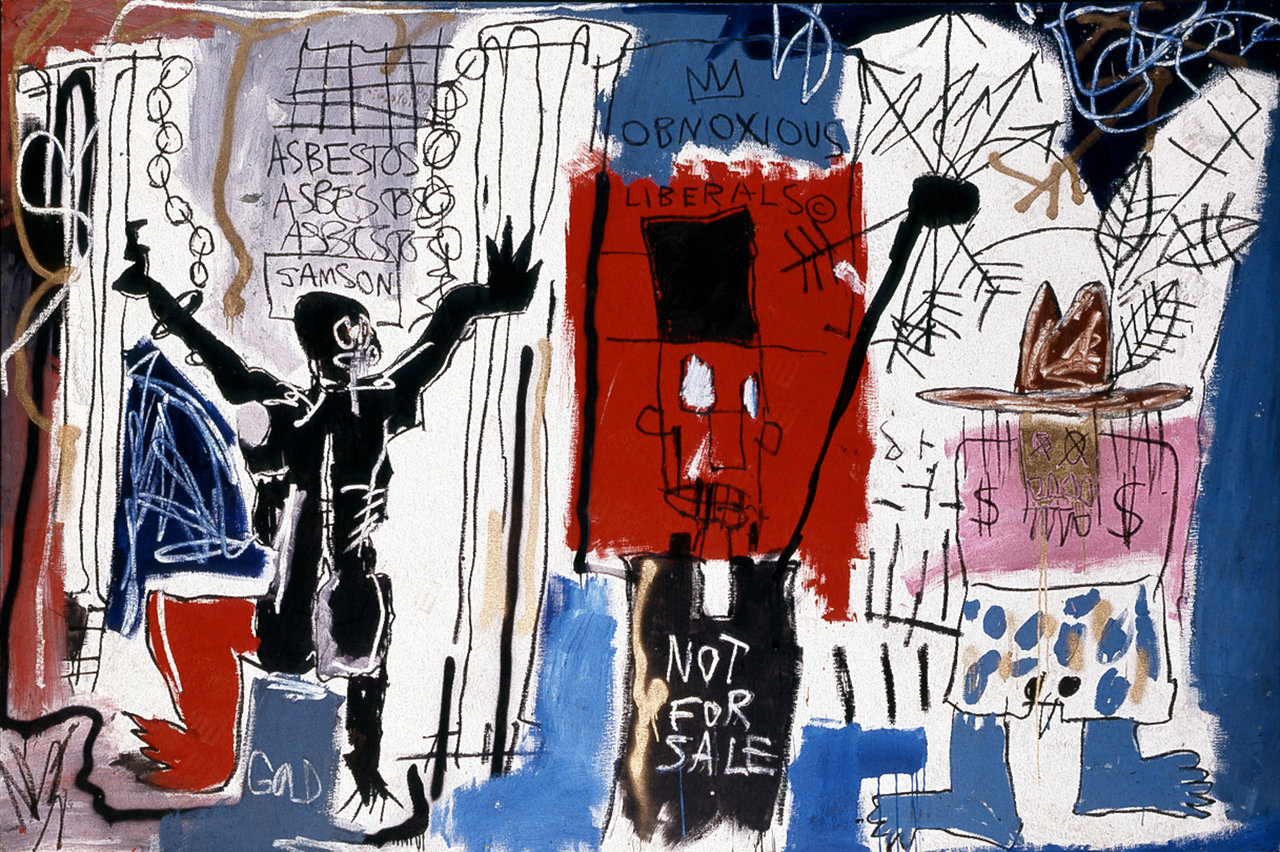 Jean-Michel Basquiat, Obnoxious Liberals, 1982. Acrylic, oilstick, and spray paint on canvas, 172.72 x 259.08 cm. The Eli and Edythe L. Broad Collection © Estate of Jean-Michel Basquiat (2014. Licensed by Artestar, New York
Jean-Michel Basquiat, Obnoxious Liberals, 1982. Acrylic, oilstick, and spray paint on canvas, 172.72 x 259.08 cm. The Eli and Edythe L. Broad Collection © Estate of Jean-Michel Basquiat (2014. Licensed by Artestar, New York
It is clear that the curators of this show were well aware of the challenges of traversing Basquiat’s work. At the press preview guest curator Dieter Buchhart revealed his vision for Now is the Time. As he said, the exhibit is rooted in an effort to bridge the ethos of Manhattan and the tribulations of a black artist in a 1980’s metropolis, to a present-day Toronto. Various community advisors partnered with the gallery to spark a dialogue surrounding municipal issues, including groups such as UNITY – a nonprofit breakdancing organization focused on youth empowerment.
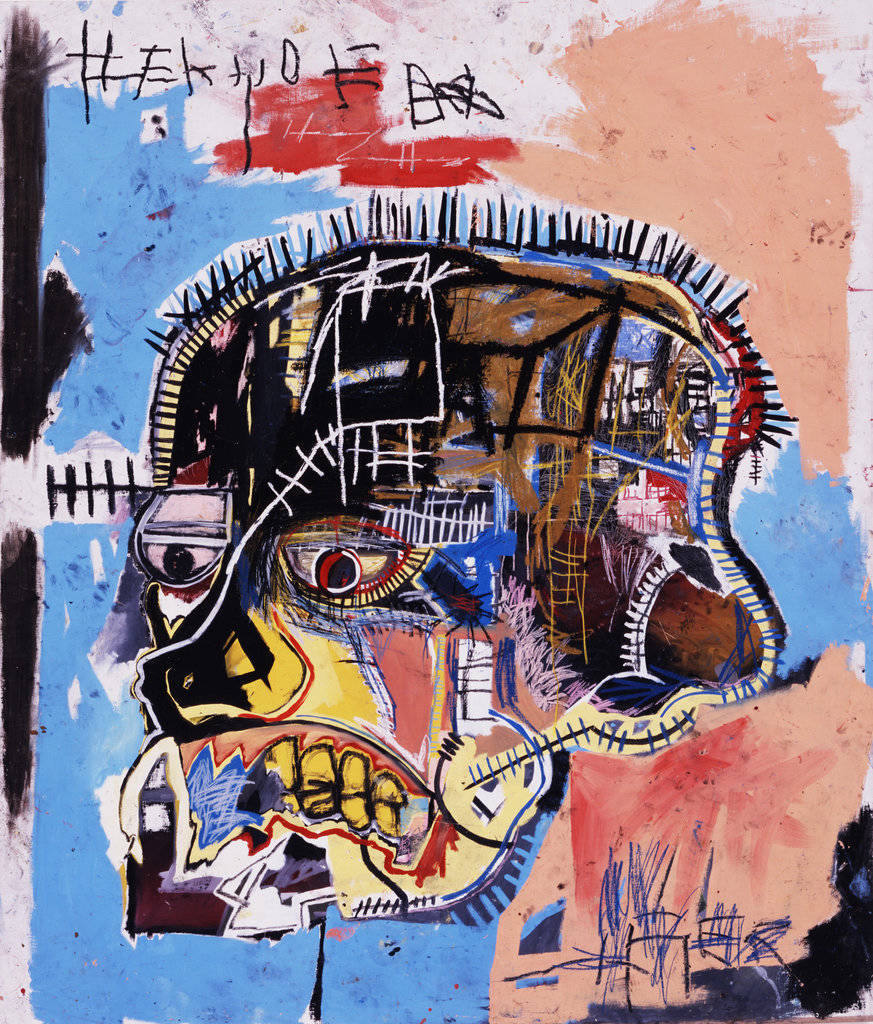 Jean-Michel Basquiat, Untitled,1981.Acrylic and oilstick on canvas, 244.48 x 182.88 cm. The Eli and Edythe L. Broad Collection. Photography credit: Douglas M. Parker Studio, Los Angeles © Estate of Jean-Michel Basquiat (2014). Licensed by Artestar, New York
Jean-Michel Basquiat, Untitled,1981.Acrylic and oilstick on canvas, 244.48 x 182.88 cm. The Eli and Edythe L. Broad Collection. Photography credit: Douglas M. Parker Studio, Los Angeles © Estate of Jean-Michel Basquiat (2014). Licensed by Artestar, New York
A perhaps daunting task, considering the complex and often racialized subject matter that is evoked in Basquiat’s work. Some, including Aubrey Jax, of BlogTO believe this community collaboration to be a cheap attempt at diminishing the inherent irony of displaying artwork which so vividly challenges social and racial hierarchies within an affluent and predominantly white institution.
It’s bittersweet to think that Basquiat’s work is so accessible and provoking due to the fact that it still hits that same nerve. Almost thirty years later his visceral paintings still scream at you as you walk by them. They still push us to feel uncomfortable, as they draw parallels between the police brutality against young black males in New York in the 80’s to the riots and unwarranted police violence in the United States of the present day.
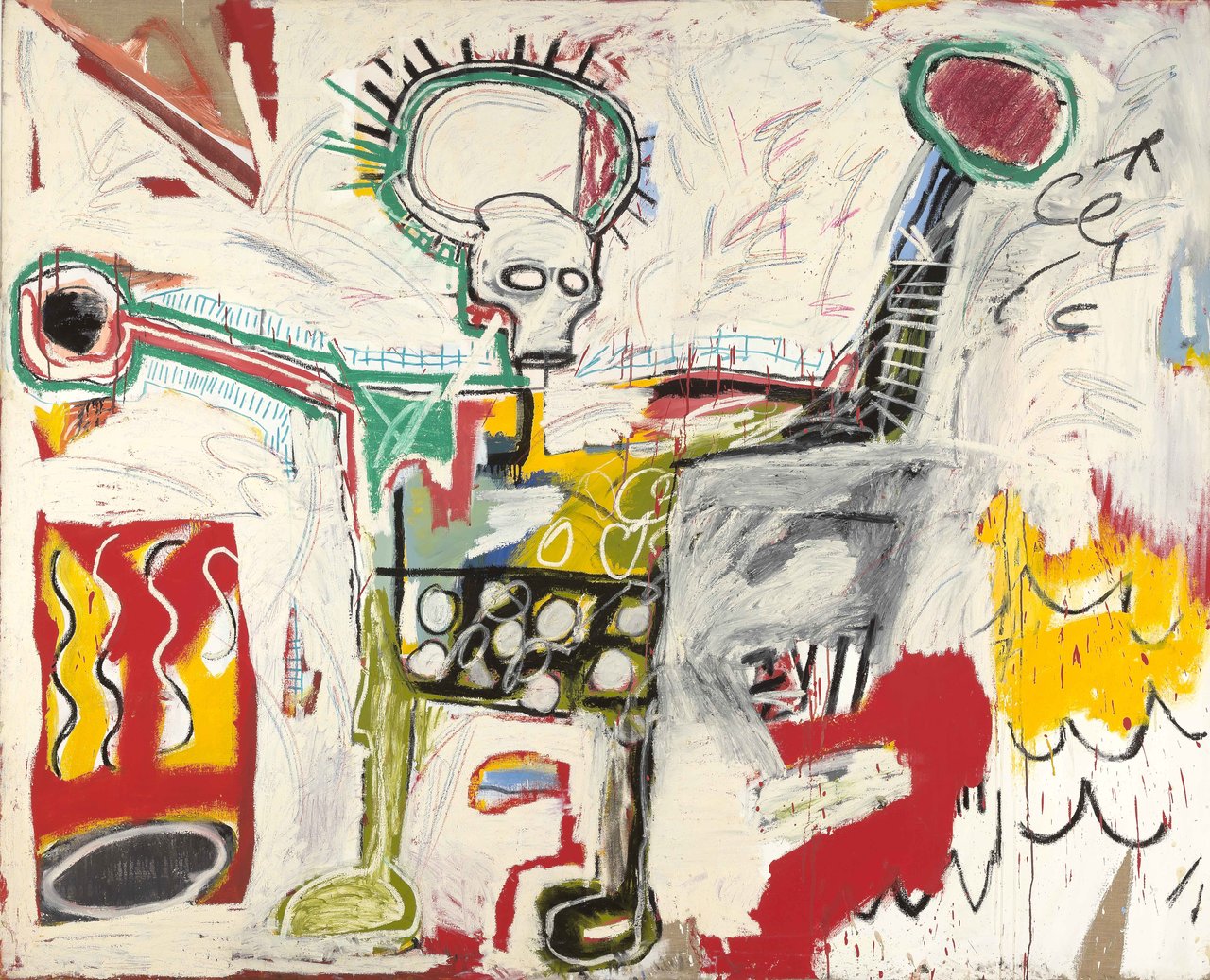 Jean-Michel Basquiat, Untitled, 1982, Acrylic and oil on linen, 193 x 239 cm. Museum Boijmans Van Beuningen, Rotterdam. Photogapher: Studio Tromp, Rotterdam. © The Estate of Jean-Michel Basquiat. Licensed by Artestar, New York
Jean-Michel Basquiat, Untitled, 1982, Acrylic and oil on linen, 193 x 239 cm. Museum Boijmans Van Beuningen, Rotterdam. Photogapher: Studio Tromp, Rotterdam. © The Estate of Jean-Michel Basquiat. Licensed by Artestar, New York
At first, Basquiat’s work seems dizzying, haphazard almost. However, upon closer inspection his violent scrawls and paint strokes unravel to reveal depth and insight. The work ties together various themes, such as underground street culture, racism, social hierarchies, the prevalence of black artists, as well as jazz, sports, and graffiti. He was able to effortlessly incorporate language into his artwork, as he is notorious for writing lists, enigmatic sections of poetry, and my favorite: crossed out words, which apparently were crossed out to entice further attention.
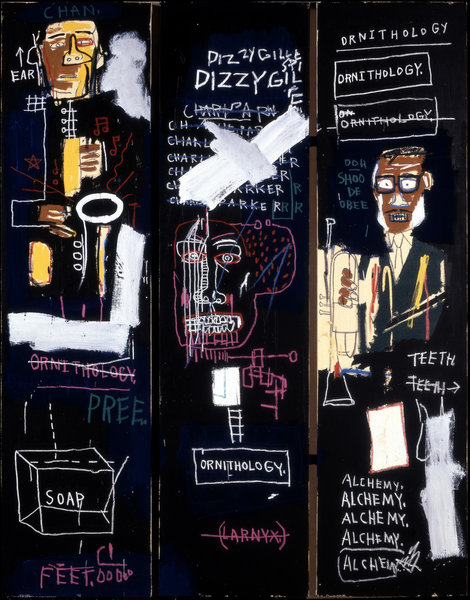 Jean-Michel Basquiat, Horn Players, 1983, Acrylic and oilstick on three canvas panels mounted on wood supports, 243.8 x 190.5 cm. The Broad Art Foundation. Photography credit: Douglas M. Parker Studio, Los Angeles © The Estate of Jean-Michel Basquiat. Licensed by Artestar, New York
Jean-Michel Basquiat, Horn Players, 1983, Acrylic and oilstick on three canvas panels mounted on wood supports, 243.8 x 190.5 cm. The Broad Art Foundation. Photography credit: Douglas M. Parker Studio, Los Angeles © The Estate of Jean-Michel Basquiat. Licensed by Artestar, New York
I believe that Basquiat’s works were in fact complemented by poems, experts of rap songs, and sound clips from community members, as the curators made a genuine attempt at temporally continuing the dialogue into present day Toronto.
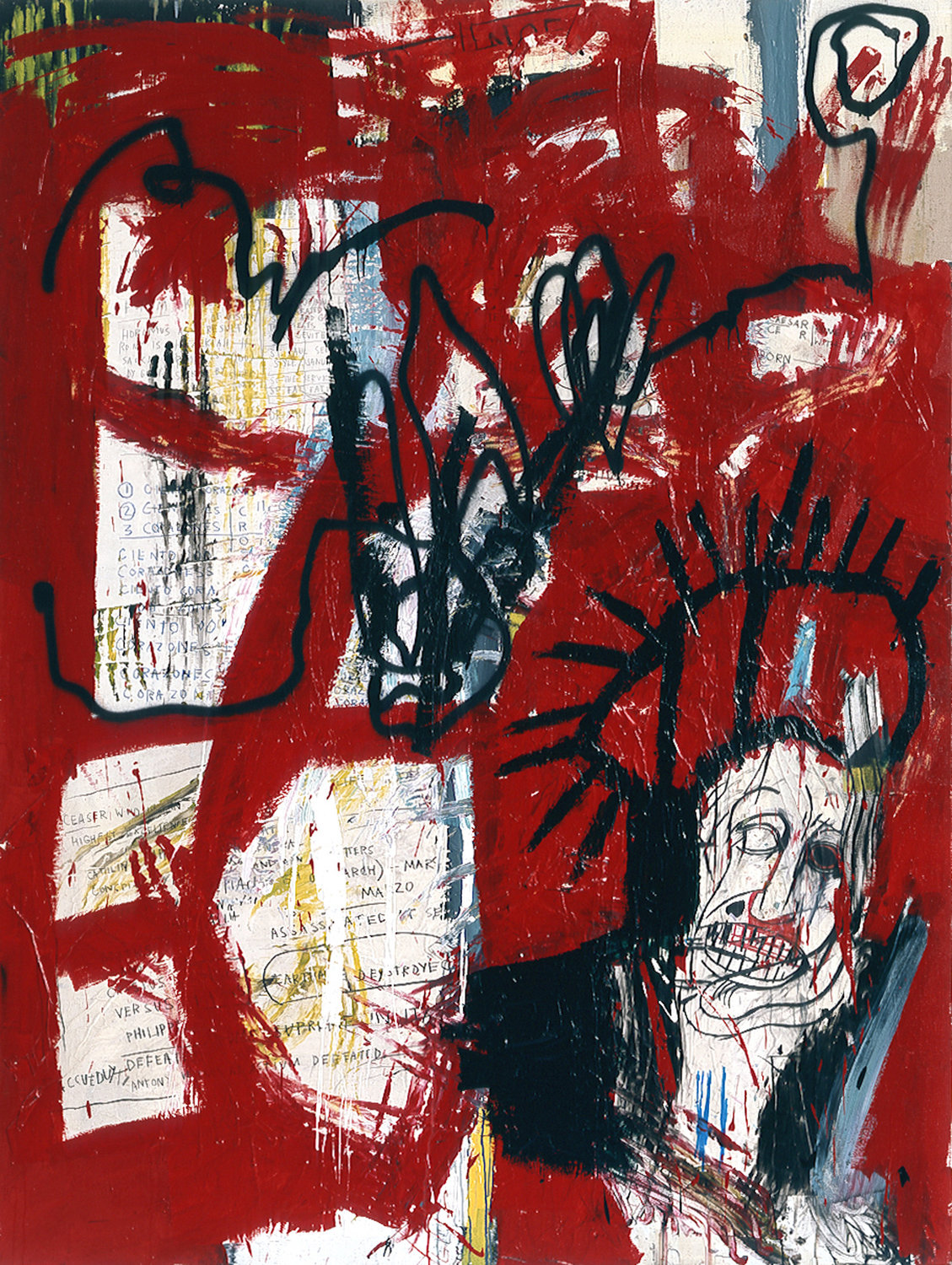 Jean-Michel Basquiat, Untitled, 1981, Acrylic, oil, paper collage and spray paint on canvas, 205.74 x 175.9 cm. The Broad Art Foundation. Photography credit: Douglas M. Parker Studio, Los Angeles. © The Estate of Jean-Michel Basquiat. Licensed by Artestar, New York
Jean-Michel Basquiat, Untitled, 1981, Acrylic, oil, paper collage and spray paint on canvas, 205.74 x 175.9 cm. The Broad Art Foundation. Photography credit: Douglas M. Parker Studio, Los Angeles. © The Estate of Jean-Michel Basquiat. Licensed by Artestar, New York
One particular thing that stood out to me is that the curators did not touch the subject of Basquiat’s early death. While they did draw attention to personal intimacies in his artwork such as a car accident at the age of seven, and the death of his close friend and fellow tagger, Michael Stewart, they decided to forgo a narrative about Basquiat’s drug use and untimely death. Perhaps this decision was made in respect to his family, particularly his sisters who worked with the gallery to relay commentary on his life as an artist. This was however, an interesting choice considering the notoriety that he gained in decades that preceded his overdose, as made clear by his ongoing legacy in literature, music, and art.
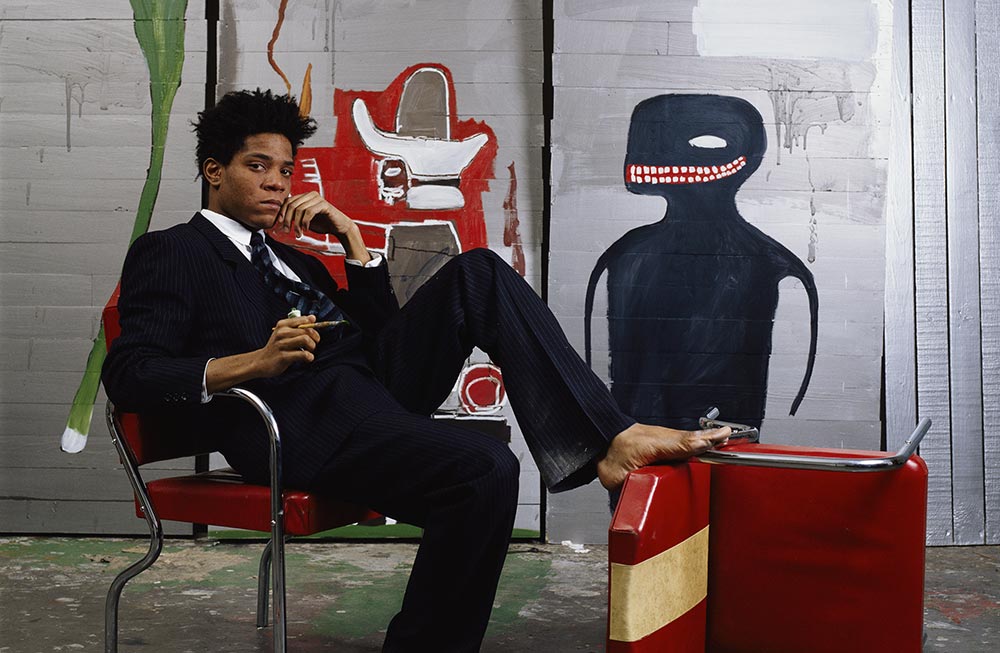 Jean-Michel Basquiat appears on the cover of the New York Times Magazine, February 10, 1985 © 2015 Lizzie Himmel
Jean-Michel Basquiat appears on the cover of the New York Times Magazine, February 10, 1985 © 2015 Lizzie Himmel
Regardless or whether or not the AGO has done Basquiat justice, it is clear that his work still carries the same seduction and lure that taps into an intrinsic desire for understanding, and is absolutely a must to see.
Ella Gorevalov
*Exhibition information: February 7 – May 10, 2015, Art Gallery of Ontario, 317 Dundas Street West, Toronto. Gallery hours: Tue & Thur – Sun: 10 – 5:30, Wed 10 – 8:30 p.m.; Extended Friday hours (5:30 – 8:30 p.m.): February 20 and 27, 2015.
